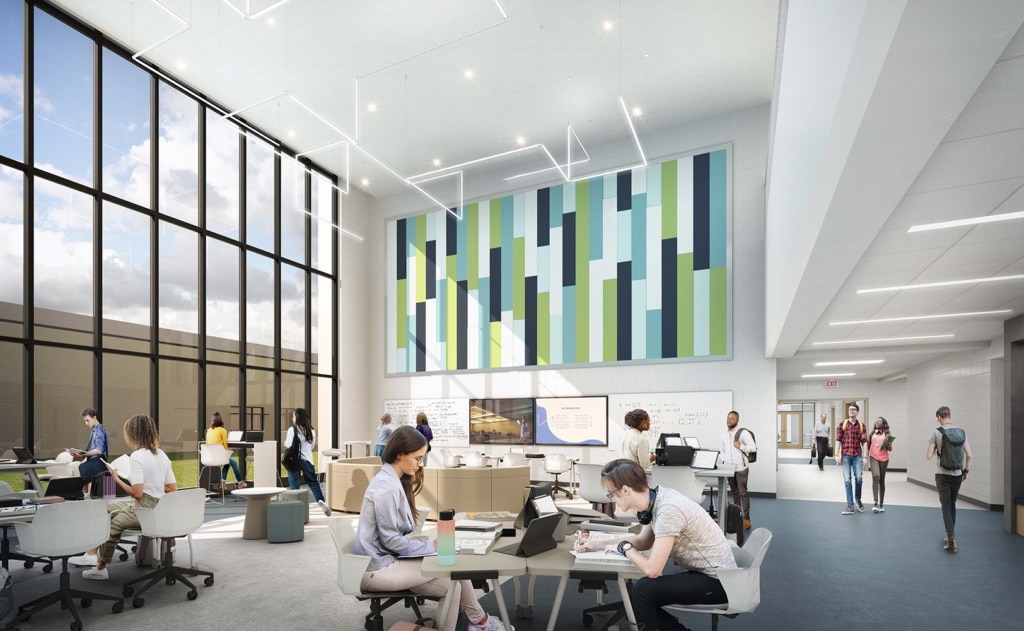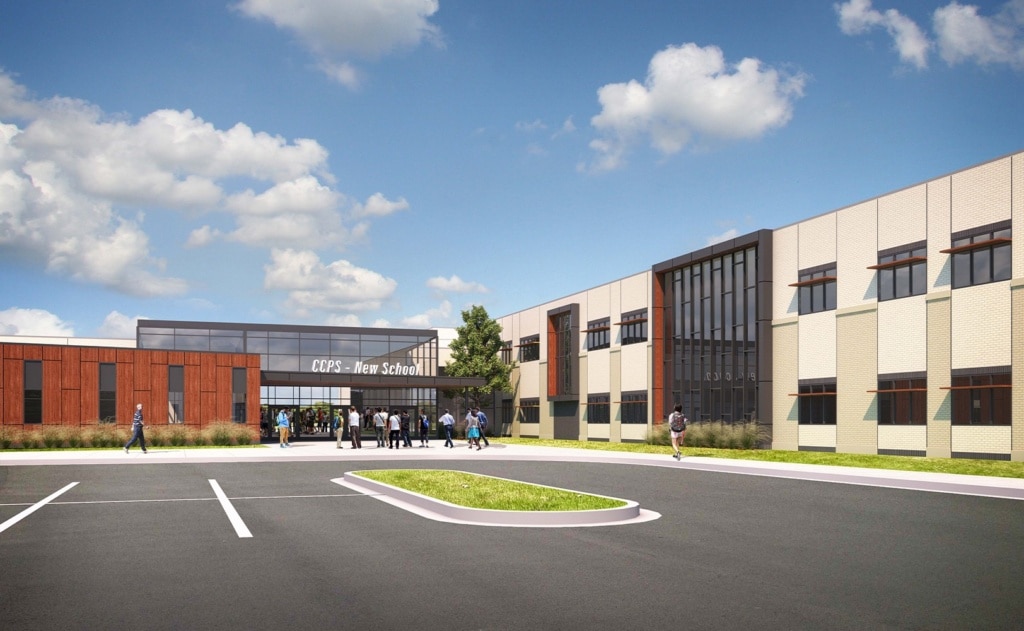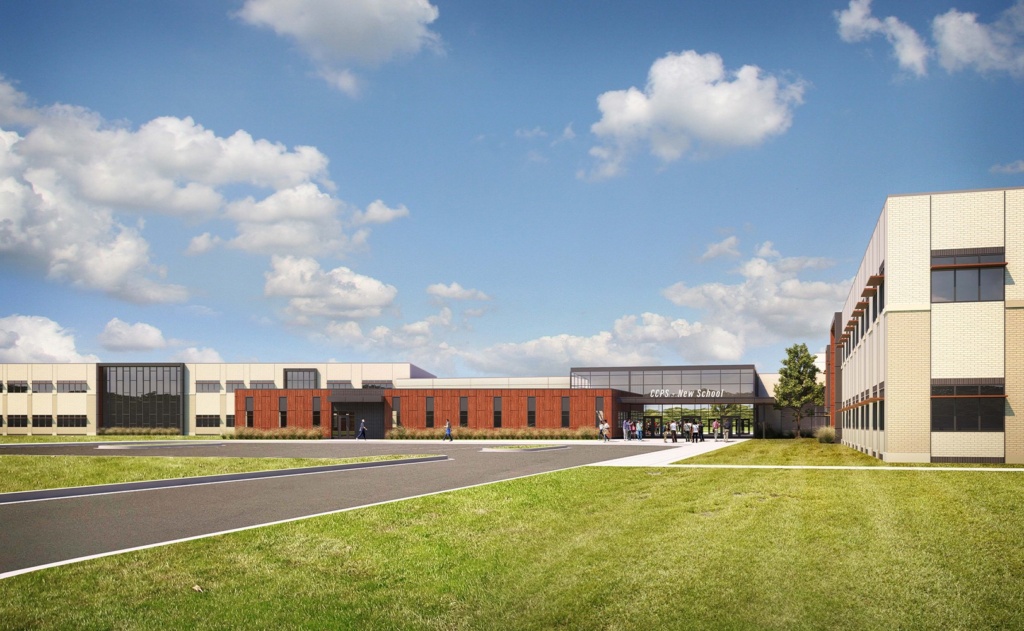As the Christian County Board of Education prepares to consolidate its two high schools into one large school, some residents are less than enthusiastic about the proposition because of what they feel is a lack of communication on the board’s part.
The plan to consolidate the two high schools and purchase the site where one large high school will eventually stand was approved by the board on Aug. 19, 2021, following months of discourse on both sides of the proverbial fence.
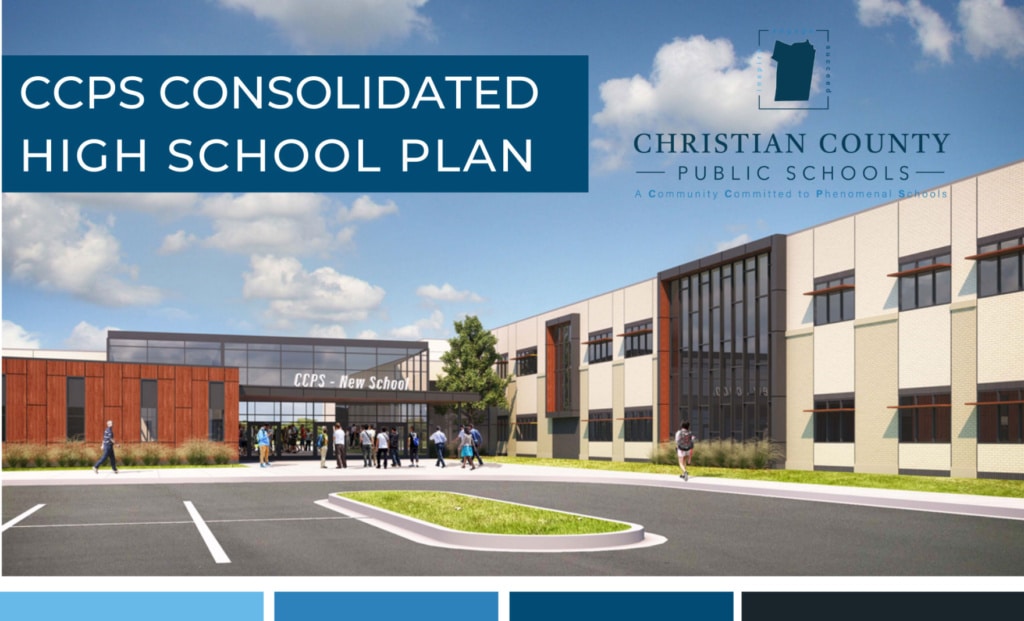
Superintendent Christopher Bentzel said constructing two new high schools years apart from each other would have posed equity concerns for students. The consolidation aims to get every student “on the same sheet of music” moving forward, with equal access to safe facilities, modern technology, advanced placement courses and the adjacent Murray State regional campus.
This new school will be broken down into five “academies” of approximately 400 students each. Said academies will follow a specific pathway — agriculture, engineering, business, hospitality or medical — with accompanying principals, guidance counselors and teachers.
“Opportunities for all kids,” Bentzel said. “If they want post-graduation work, if they want two-year, if they want four-year, if they want military, it’s all there in the building.”
Transportation and finances were other factors. Bentzel hopes the integration of career and technical education into the new school will better centralize courses and lessen the bussing around of students. Despite this, the new school will not have its own swimming pool, so students will continue to be transported to the existing pool at Hopkinsville High.
He also said constructing two high schools for 1,200 to 1,500 students each with their own athletic facilities would have cost $200 million, a figure he based on the upcoming high school in Scott County. One large school for 2,500 students, on the other hand, is projected to cost less than $150 million.
Voted down in November 2019, the “nickel tax” would have collected a $0.05 cent tax on every $100 of real and tangible property and was intended to generate funding to construct new academic buildings for the county’s two high schools.
Ultimately, the board decided taking advantage of immediate interest rates and bonding capacity for one school would be more effective than pushing the nickel tax again for two — especially considering Christian County has the seventh-lowest property tax rate in Kentucky despite having the 11th largest population.
“The people had spoken, and we tried to listen to the people,” Bentzel said. “Even if you had done it again and changed the tactics, it probably wouldn’t work, and it’s wasting time. It’s wasting valuable time because, each year you progress, you’re losing another year of the facilities you have in place and not doing anything.”
In pursuit of “long-term, tangible” benefits for the community, the board put nearly $30 million of its COVID-19 stimulus money toward the consolidation as opposed to temporary measures like personal protective equipment or an air purifier.
After consulting the public and visiting the previously consolidated McCracken County, Bentzel concluded that consolidation was key. Architects for the consolidation anticipate construction documents will be completed by May and construction will begin this summer, though the plan still needs to be approved by the Kentucky Department of Education.
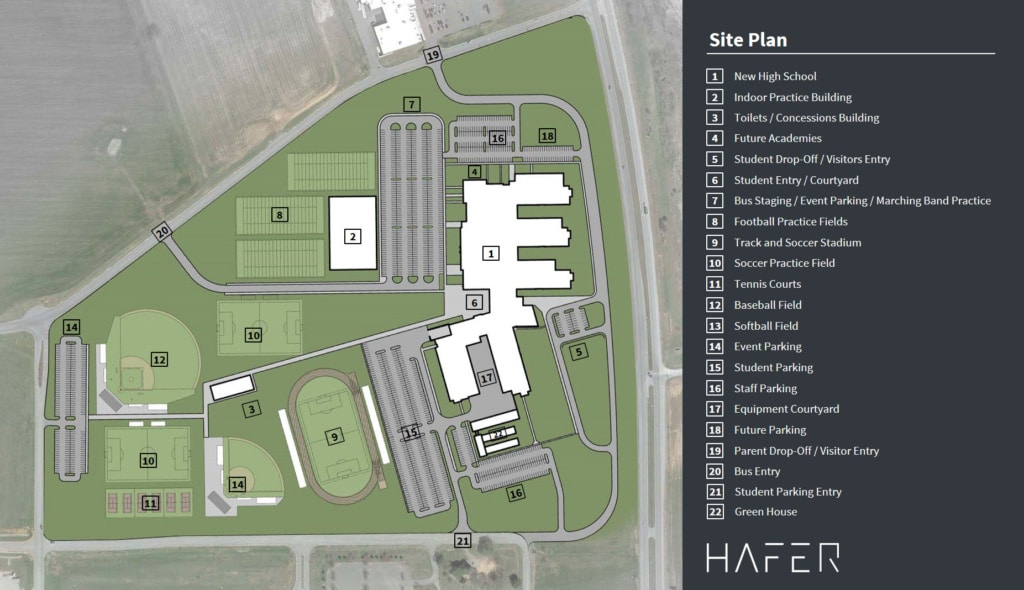
David Webster and Caleb Ballard are the administrators of the “Citizens Against Consolidation” Facebook group where they and 158 others have voiced their reservations regarding the impending academy-style school since Nov. 1.
Their primary concern with the consolidation is what they consider a lack of communication between the board and county residents, saying there were ongoing discussions before the public was made aware in May 2021.
“They presented the whole deal back with the nickel tax and said there was no consolidation that was going to happen,” Webster said. “After they started the process, Mr. [Chris] Bentzel was on one of the local radio stations and stated that in 2018 they had already started talks of the consolidation process.”
In Webster’s appraisal, opponents of the consolidation comprise “over half the population of the county.” Ballard said he has spoken at length to “at least 200 people” about the consolidation, only four or five of whom held positive views of it. Yet some residents with whom they spoke said they weren’t aware of the plan until it was well underway.
“If you give them some of the facts, they immediately are like, ‘Well, why would I be for this?’” Ballard said. “Cost is a big concern, too, in the community because of the 2019 nickel tax. [The board] never got a solid, blueprint, build-ready plan for that high school. It was never presented to the public. All of their figures were based on an estimation from the state.”
A similar page, “Christian County/Hoptown needs 2 High Schools,” has accumulated 576 followers since May 19. Although the page has no contact information, the about tab states the group aims to share the benefits of two schools and the downsides of a “mega-school.” The “Stop Corruption in Hopkinsville Kentucky” page has also indicated its opposition.
“The whole thing has been behind closed doors until they actually got their foot in the door with the KDE to get the approval on everything,” Webster added. “And then, they decided to come out and let the public know, ‘Hey, we’ve got this going on. You’re going to have to like it and jump on board because there’s nothing you can do now.’”
But despite objections by these groups, Bentzel remains optimistic for the future of education in his district and the region at large.

Beginning a year ago, a high school student committee and local planning committee — only the latter of which was regulatory — met four times each to discuss the consolidation. Three additional committee forums were held in the summer, all advertised two weeks in advance.
Bentzel said 35 people attended the in-person meeting at Crofton Elementary, 17 at South Christian Elementary and 15 at Christian County Middle, accounting for less than one percent of Christian County residents.
Ballard, a lifelong county resident who graduated from Hopkinsville High School in 2011, said much of the board’s deliberation occurred during the pandemic when in-person gatherings were discouraged. While the meetings were posted in the Kentucky New Era, he said the newspaper’s reach wasn’t enough to draw the community’s attention toward the issue.
“I went and spoke at every one of those forums,” Ballard said. “At the last forum, I took their misconceptions list, I started listing down their own misconceptions, and asked them, ‘What about this, what about this, what about this?’ And they could not answer the questions that were asked.”
Webster, who lives on the north side of Hopkinsville near Dawson Springs, expressed concerns over students’ travel times due to the size of the county, noting his high school-aged daughter regularly experiences bus rides of an hour and a half to an hour and 45 minutes in the afternoons.
The new school will be located between Panera Bread and the Murray State regional campus on Fort Campbell Boulevard. While the particulars have not been finalized, Bentzel said the school’s start time will be adjusted since middle and high schoolers will no longer share buses. Bentzel said planning documents indicate most bus routes will be shorter thanks to surrounding access points, though some will be marginally longer.
The future of sports in the county is also something the opposition has considered, suggesting that attendance of games will drop without a cross-town rivalry.
“Once you split your boosters in the middle like that and tell them, ‘Whoever you’ve been supporting for the past 30, 40, 50 years, they don’t exist anymore,’ do you really think they’re going to continue?” Ballard said. “The small supporters are going to be like, ‘Well, I didn’t go to that school. I don’t really care to support this.’”
Above all, Ballard said the consolidation could also have an adverse effect on students’ education based on studies he has read pertaining to school facilities. He also questioned whether the new school will be properly maintained with time, citing the deteriorating state of the current high schools as cause for concern.
“Smaller schools are better for children,” Ballard said. “Having one consolidated high school is not going to be the best option for our community.”
Bentzel noted class sizes are mandated to fall within 25 to 32 students regardless of total enrollment.
“People are saying this is a ‘mega-school’ or a big high school,” Bentzel said. “We’ll see how it plays out, get adjusted to it, and then, I think we’ll see the growth.”
Bentzel is aware of the criticism leveraged against consolidation. Out of the 75 attendees of the community forums, he said “a little over half” were against it, but he believes many are excited for it.
“It’s like somebody told me when I took this job,” Bentzel began. “Being a superintendent is kind of like selling apples. You have to have the best, shiniest, juiciest, tastiest, cheapest, quality apples you can, but at the end of the day, some people just don’t like apples, and you’re not going to get them to buy one.”
Ballard said some parents may enroll their children in one of Hopkinsville’s two private high schools — Heritage Christian or University Heights — as a direct result of the consolidation, but Bentzel anticipates this will account for less than five percent of students.
“I think, over the next 5 to 10 years, our high school will transform education in Christian County and western Kentucky,” Bentzel said.

